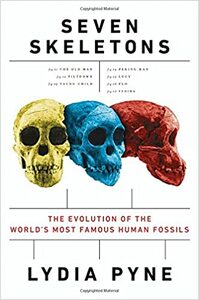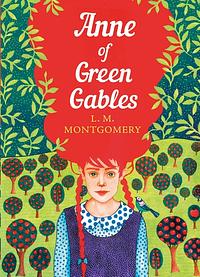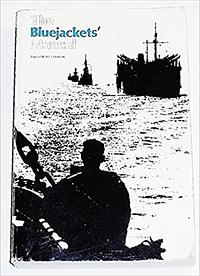Take a photo of a barcode or cover
kevin_shepherd's Reviews (563)
In keeping with the "Introducing" series tradition, Evolutionary Psychology combines quirky illustrations with straightforward, intelligent writing to make complex subject matter fun and understandable. Author Dylan Evans simplifies and clarifies such diverse EP concepts as body symmetry, brain modules, reciprocal altruism, and short-term mating strategies.
*Did you know 'tit-for-tat' is a real scientific term? (I did not.)
As for the illustrations, Oscar Zarate's art has flair and an element of WTF! A few notables caught my eye:
• Kin Selection (pg 74) - a diminutive Richard Dawkins sits on the lap of British biologist William Hamilton, as though Hamilton were a ventriloquist and Dawkins his puppet.
• The Truth About Cinderella (pg 79) - a large portrait of a battered and bleeding child, under which two smirking psychologists, Canadians Martin Daly and Margo Wilson, are accurately predicting that step-parents beat their children more often than biological parents.
• Weaning (pg 85) - a baby is apparently directing his mother's nipple as a fountain of milk gushes onto her lap.
• Dads and Cads (pg 120) - a naked, pregnant woman with what looks to be a large penis-lizard perched on her shoulder.
• Women's Extra-Pair Mating (pg 125) - to illustrate 'cuckold strategy,' a white woman, lying in bed, holding a offensively racist rendering of a black baby, while her doting white husband stands at her bedside. She is saying to her husband, "He looks just like you!"
Five stars, minus one for page 125.
*Did you know 'tit-for-tat' is a real scientific term? (I did not.)
As for the illustrations, Oscar Zarate's art has flair and an element of WTF! A few notables caught my eye:
• Kin Selection (pg 74) - a diminutive Richard Dawkins sits on the lap of British biologist William Hamilton, as though Hamilton were a ventriloquist and Dawkins his puppet.
• The Truth About Cinderella (pg 79) - a large portrait of a battered and bleeding child, under which two smirking psychologists, Canadians Martin Daly and Margo Wilson, are accurately predicting that step-parents beat their children more often than biological parents.
• Weaning (pg 85) - a baby is apparently directing his mother's nipple as a fountain of milk gushes onto her lap.
• Dads and Cads (pg 120) - a naked, pregnant woman with what looks to be a large penis-lizard perched on her shoulder.
• Women's Extra-Pair Mating (pg 125) - to illustrate 'cuckold strategy,' a white woman, lying in bed, holding a offensively racist rendering of a black baby, while her doting white husband stands at her bedside. She is saying to her husband, "He looks just like you!"
Five stars, minus one for page 125.
The art of Robert Crumb meets the life & times of Franz Kafka; the perfect marriage of form and function. If you're a fan of both, prepare yourself for a brain-gasm.
“Real adventures do not happen to people who remain at home. They must be sought abroad.”
A collection of short stories about the lives of middle & working class Irish citizens centered in and around Dublin. Joyce’s bits begin with tales of children and progress nonlinearly through adult circumstances to a final tale titled “The Dead.”
Each vignette is loosely formatted around some form of realization, though most of the realizations are subtle. There isn’t necessarily an ending to every piece, and that’s okay. The Joyce Universe, much like our universe, is short on epiphanies and long on social paralysis. Many of the conundrums of 1914 Dubliners are still familiar and relatable.
I find Joyce to be more palatable if I read him out loud with an Irish accent. Not crazy Irish like Colin Farrell or the Lucky Charms leprechaun, but articulate and controlled like Cillian Murphy or maybe Chris O’Dowd.
A collection of short stories about the lives of middle & working class Irish citizens centered in and around Dublin. Joyce’s bits begin with tales of children and progress nonlinearly through adult circumstances to a final tale titled “The Dead.”
Each vignette is loosely formatted around some form of realization, though most of the realizations are subtle. There isn’t necessarily an ending to every piece, and that’s okay. The Joyce Universe, much like our universe, is short on epiphanies and long on social paralysis. Many of the conundrums of 1914 Dubliners are still familiar and relatable.
I find Joyce to be more palatable if I read him out loud with an Irish accent. Not crazy Irish like Colin Farrell or the Lucky Charms leprechaun, but articulate and controlled like Cillian Murphy or maybe Chris O’Dowd.
Prepare yourself for what my friend Candi terms a “Non-Review.” That is to say, this is more about me than it is about this textbook…
Unlike some of you, I didn’t attend college straight after high school. [My Canadian friends say “attend university,” instead of “attend college” - for some reason Americans don’t necessarily make a distinction between colleges and universities. I did indeed attend a university—but I digress…] It was roughly eleven years after high school before I applied—and was accepted—to a “college.” By that time I was a veteran with a wife, two kids and a full-time job. I had no dormitory/fraternity house, flirty co-ed college experience. I had 3-5 hour night classes (we had no “online classes” back then) wedged between little league practices and Cub Scout meetings. Looking back now, I don’t know how I ever managed to get any sleep. (Maybe I slept at work?)
For my first semester I enrolled in only three classes: college algebra, english 101 and psychology 101. If you’ve ever attended night classes at an American university you may already be familiar with the demographics. Night classes are frequently populated with adults (people with day jobs) and are frequently taught by adjunct professors (people with day jobs). My psychology class was taught by a practicing psychologist who had previously worked as a “primate behaviorist” for NASA. In fact, he claimed to have been on the team that trained ‘Ham’ - the chimpanzee that NASA rocketed into space in 1961.
What does any of this have to do with a psychology textbook? Nothing at all - except to say I have nothing but fond memories of this class—and I got an “A”!
Unlike some of you, I didn’t attend college straight after high school. [My Canadian friends say “attend university,” instead of “attend college” - for some reason Americans don’t necessarily make a distinction between colleges and universities. I did indeed attend a university—but I digress…] It was roughly eleven years after high school before I applied—and was accepted—to a “college.” By that time I was a veteran with a wife, two kids and a full-time job. I had no dormitory/fraternity house, flirty co-ed college experience. I had 3-5 hour night classes (we had no “online classes” back then) wedged between little league practices and Cub Scout meetings. Looking back now, I don’t know how I ever managed to get any sleep. (Maybe I slept at work?)
For my first semester I enrolled in only three classes: college algebra, english 101 and psychology 101. If you’ve ever attended night classes at an American university you may already be familiar with the demographics. Night classes are frequently populated with adults (people with day jobs) and are frequently taught by adjunct professors (people with day jobs). My psychology class was taught by a practicing psychologist who had previously worked as a “primate behaviorist” for NASA. In fact, he claimed to have been on the team that trained ‘Ham’ - the chimpanzee that NASA rocketed into space in 1961.
What does any of this have to do with a psychology textbook? Nothing at all - except to say I have nothing but fond memories of this class—and I got an “A”!
The Old Man, Piltdown, Taung Child, Peking Man, Lucy, Flo, and Sediba; Anthropological icons. Through textbooks and lectures, and the occasional article in National Geographic, I thought I had a grip on their scientific significance and place in human prehistory. 'Turns out, I had only an inkling of their socio-political importance and knew almost nothing of their textured and fascinating provenance. I was captivated by Dr. Pyne's obvious enthusiasm and love of the material, so much so that I picked up the audiobook to relive the stories again as I travel.
Niven really knows how to emphasize the “science” in “science fiction.” Whether it’s the impact of our sun going nova [Inconstant Moon] or the realities of landing an astronaut on Venus [Becalmed in Hell] or the perils of a manned expedition to Pluto [Wait it Out] or the mind numbing complexities of the multiverse [All the Myriad Ways], this collection of sci-fi shorts has enough chutzpah to be completely plausible.
Charlotte Perkins Gilman’s short story is on par with anything Edgar Allan Poe ever wrote. It is shudderingly unsettling, decidedly brilliant and importantly feminist.
Redheaded adolescent drama-queen gets (mistakenly) adopted by a childless Canadian couple residing on Prince Edward Island…
Who would have thought that puffed sleeves and liniment cake could be so riotously entertaining? A five star rating seems grossly insufficient but it is the best that I can do.
Who would have thought that puffed sleeves and liniment cake could be so riotously entertaining? A five star rating seems grossly insufficient but it is the best that I can do.
"From the science of the ancients to modern genetics."
Rooney's research is as much about the history and evolution of biological science as it is about its structure and mechanics. This is as in-depth as a 208 page text could possibly be, and it's laid out in textbook fashion with plenty of anecdotes and gorgeous illustrations.
What I found most interesting, and often surprising, were the colorful characterizations and antics of some of biology's more obscure pioneers. For instance, Lazzaro Spallanzani (1771), who fashioned tight taffeta pants for male frogs to inhibit their mating (which he later washed out to collect their sperm). Or Rudolf Virchow (1821 - 1902), who chose two pork sausages as weapons of choice in a duel with German Chancellor Otto von Bismarck. Or Rev. Robert Plot (1640 - 1696), who found the possibility of dinosaurs so blasphemous that he labeled a Megalosaurus femur "Scrotum humanum," claiming that it must have come from a giant man killed during Noah's flood.
An expansive overview of biology that even a lay person should enjoy. 4 stars.
Rooney's research is as much about the history and evolution of biological science as it is about its structure and mechanics. This is as in-depth as a 208 page text could possibly be, and it's laid out in textbook fashion with plenty of anecdotes and gorgeous illustrations.
What I found most interesting, and often surprising, were the colorful characterizations and antics of some of biology's more obscure pioneers. For instance, Lazzaro Spallanzani (1771), who fashioned tight taffeta pants for male frogs to inhibit their mating (which he later washed out to collect their sperm). Or Rudolf Virchow (1821 - 1902), who chose two pork sausages as weapons of choice in a duel with German Chancellor Otto von Bismarck. Or Rev. Robert Plot (1640 - 1696), who found the possibility of dinosaurs so blasphemous that he labeled a Megalosaurus femur "Scrotum humanum," claiming that it must have come from a giant man killed during Noah's flood.
An expansive overview of biology that even a lay person should enjoy. 4 stars.
Prior to my enlistment in 1980 I came across an old edition of the BJM at the public library and read it cover to cover. Without a doubt it gave me a head start on learning basic seamanship, recognizing rank & insignia, knot tying, and memorizing the all-important 11 General Orders of a Sentry. It is a textbook for Navy 101 and is standard issue for all new recruits—like most other textbooks, its value depends on the motivation and enthusiasm of the student.









